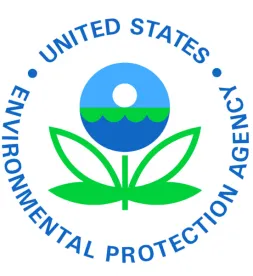Over the last few months, EPA’s enforcement priorities under the Trump Administration have come into sharper focus. The Fiscal Year 2018 Enforcement Annual Results offer a snapshot of a full year of the agency’s enforcement activity under Senate-confirmed leadership. And, the agency’s newly announced National Compliance Initiatives(NCIs) point to the areas where the EPA intends to prioritize its resources moving forward. Together, these reports show a continued emphasis on compliance assurance over punishment and a reduced focus on particular industry sectors.
In most categories of traditional EPA enforcement statistics, 2018 was a relatively slow year. Total fines and restitution, Superfund commitments, civil judicial penalties, and inspections initiated were all down. Civil judicial penalties hit their lowest point since 2008. While there was a slight uptick in the number of environmental crime cases opened from FY 2017 to FY 2018, that number has dropped more than 50% since 2011. These statistics should be read in context. Large cases like the Volkswagen Clean Air Act settlement or the Fiat Chrysler settlement can skew enforcement numbers and cause them to spike or plummet from year to year. Some statistics, like criminal fines and restitution are especially variable. So, while the 2018 statistics fit within an overall decline in enforcement at the federal level, that decline has not been steady across all enforcement categories.
One possible explanation for the change in federal enforcement statistics is a change in the agency’s approach to enforcement. Compliance has been the consistent focus of EPA’s Office of Enforcement and Compliance Assurance (OECA) under the leadership of Assistant Administrator Susan Bodine. Testifying before Congress, Bodine pointed out how OECA uses informal options to encourage compliance without resorting to formal enforcement. These actions include educating regulated entities, helping facilities return to compliance, building state enforcement capacity, and providing “state assists” by supporting state-led enforcement actions. In July 2019, Bodine issued a memorandum that provides a “clear roadmap” for EPA and its partners to follow in pursuing these shared compliance initiatives.
None of these compliance-based approaches would be expected to show up in most enforcement statistics. OECA’s more collaborative, compliance-focused approach is also evinced by the 2018 increase in New Owner Audit Agreements. Here, we saw an annual increase of 47% in the number of facilities self-disclosing violations. Once these violations are reported, EPA can use a variety of non-penalty tools to ensure the facilities return to compliance. For example, EPA and Harcros Chemicals “collaboratively developed a settlement structure for a voluntary, global settlement of potential [Risk Management Plan] and [General Duty Clause] requirements at their facilities nationwide.” This settlement included a schedule for auditing the company’s facilities and ensuring compliance. In dollars and cents, EPA’s rate of enforcement has declined, but that may not reflect all of the efforts OECA has undertaken in achieving its end goal: compliance.
EPA Voluntary Disclosure Programs FY 2014-FY 2018
Source: EPA Enforcement Annual Results FY 2018
Understanding EPA enforcement also requires considering where OECA would like to focus its attention in the next few years. Every three years, EPA publishes its priorities in its NCIs. On June 7, 2019, EPA finalized the NCIs for the 2020-2023 cycle:
-
Creating Cleaner Air for Communities by Reducing Excess Emissions of Harmful Pollutants from Stationary Sources
-
Reducing Hazardous Air Emissions from Hazardous Waste Facilities
-
Stopping Aftermarket Defeat Devices for Vehicles and Engines
-
Reducing Significant Noncompliance with National Pollutant Discharge Elimination System Permits
-
Reducing Noncompliance with Drinking Water Standards at Community Water Systems
-
Reducing Risks of Accidental Releases at Industrial and Chemical Facilities
Several of these NCIs carried over from the previous cycle, but some are new or updated.
From 2011 to 2019, the NCIs included “Ensuring Energy Extraction Activities Comply with Environmental Laws.” This initiative focused specifically on the natural gas extraction industry. In the years the energy extraction NCI was in effect, 724 facilities were subject to concluded EPA enforcements, including 193 in FY 2018. For the next cycle, EPA has modified its clean air NCI to take a broader focus that is not sector-specific. The modified NCI will focus on sources of volatile organic compounds (VOCs) that may negatively impact an area’s attainment of the National Ambient Air Quality Standards or adversely affect vulnerable populations, as well as and Hazardous Air Pollutants (HAPs) that have a significant impact on air quality and health in communities.
There are two big takeaways from the recently released enforcement statistics and NCIs. First, the statistics confirm that OECA has continued to shift its focus to collaborating with regulated entities to ensure compliance, and that EPA’s push for cooperative federalism is shifting additional enforcement responsibilities to the state level. Second, the NCIs suggest a shift away from industry sectors and focus instead on where enforcement can be helpful in achieving pollution reduction.




 />i
/>i


